As the temperature drops and the wild rose bushes on our property shed their last petals, nature leaves us with one final gift: rosehips. These bright red fruits aren't just pretty; they're packed with vitamin C and make a soothing, immune-boosting rosehip tea that's been cherished for centuries. Sweeten with honey syrup for even more benefits!
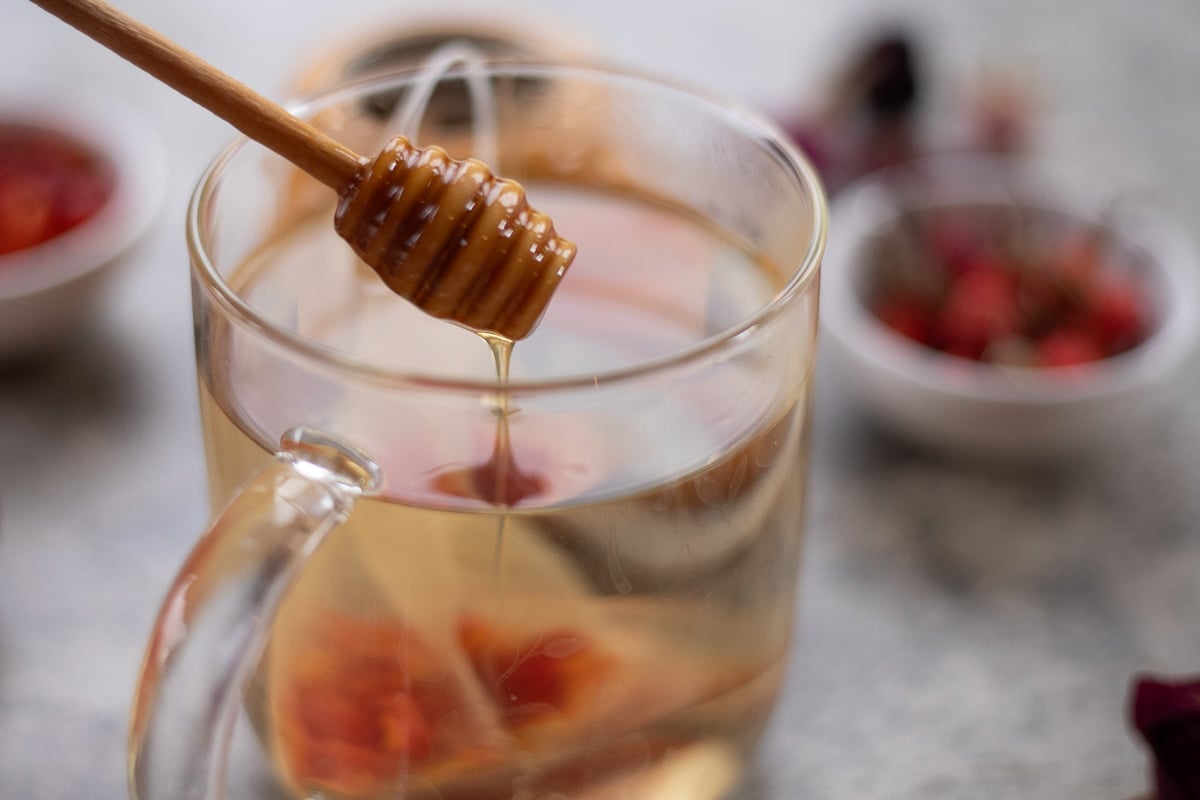
When I walk Winston & Holly-my perfect in every way terriers-around our property in the fall, I can't resist plucking a few rosehips to snack on. Wild rosebushes line our long driveway, bright with those little red gems.
I carefully eat the soft outer flesh, not the seeds and the fine hairs in the center of the rosehip. Besides enjoying them fresh, I also use them to make rosehip syrup. It's a great immunity booster. This year, I decided to try rosehip tea, and boy, am I hooked!
In this post, I'll show you a couple of ways to enjoy rosehip tea, using fresh rosehips and dried rosehips. And if you have extra rosehips, add them to your fire cider recipe!
Jump to:
☕️ What is Rosehips Tea?
Making rosehip tea is easy and rewarding. Use fresh rosehips or the dried outer flesh; either way, you'll end up with a light, floral, refreshing brew. And ignore those deep red AI photos online, real rosehip tea is much paler. Brew it both ways and discover your favorite! Then try Kashmiri pink chai, which also contains rosehips.
🔖 Ingredients & Substitutions
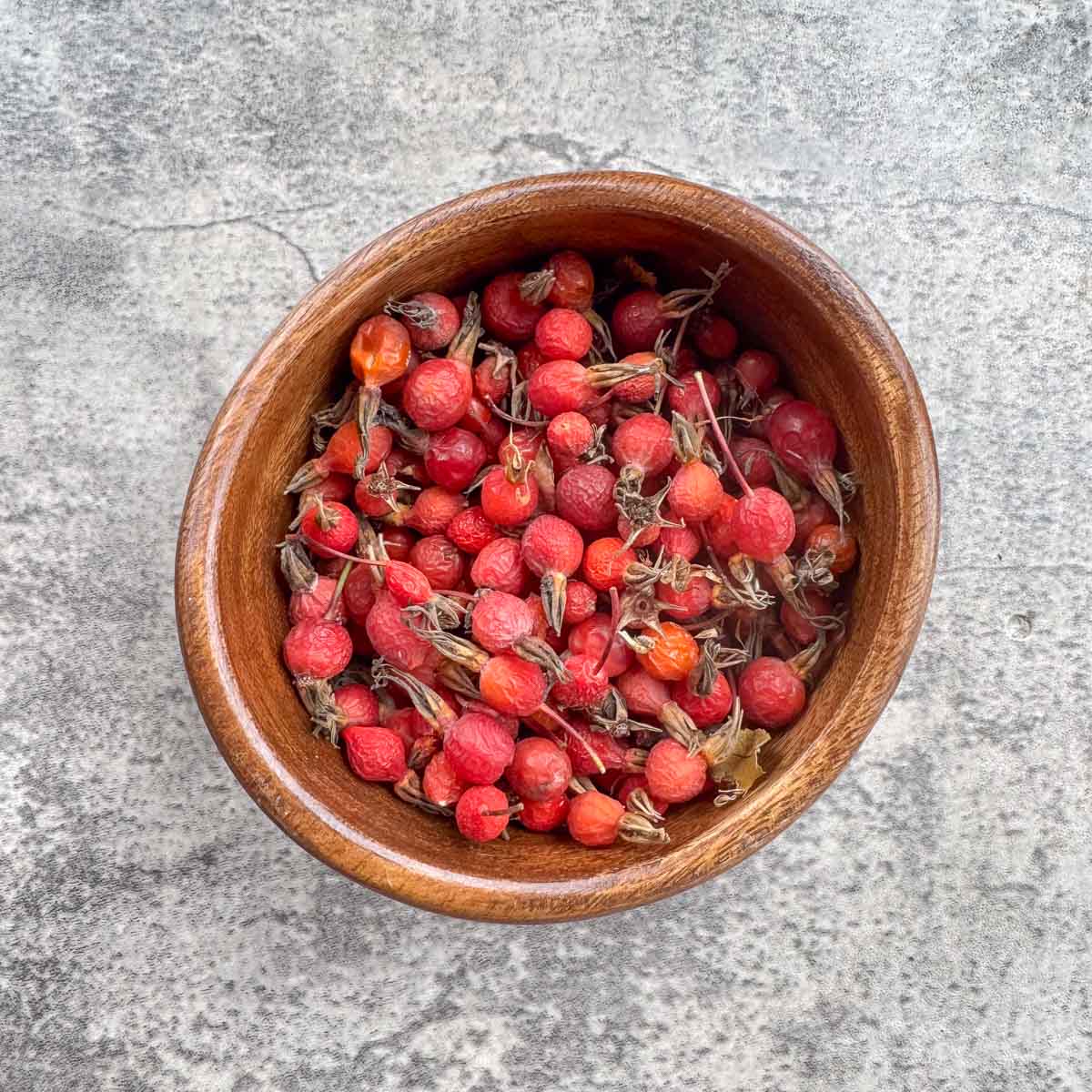
All you need to make rosehip tea is rosehips (either fresh or dried) and hot water (around 185°F). Sweetener is optional!
Using Fresh Rosehips to Make Rosehip Tea
Step 1: Rinse and remove rosehip stems and blossom ends, then lightly crush to release their flavor.
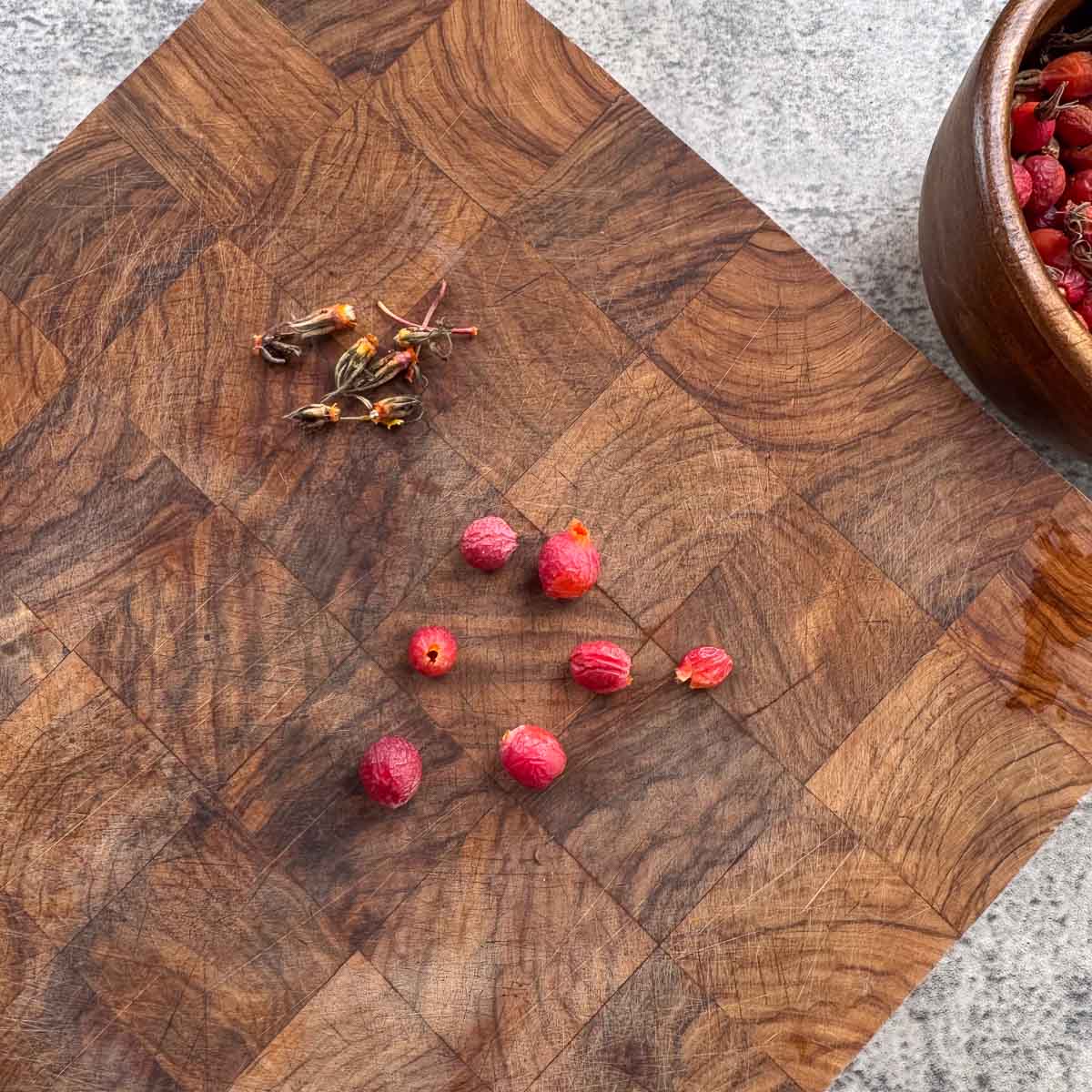

Step 2: Add approximately 6 crushed rosehips to a tea bag, tea strainer, or tea pot and steep in water heated to 185°F for approximately 8 minutes. Strain tea, sweeten with your favorite sweetener, and enjoy!
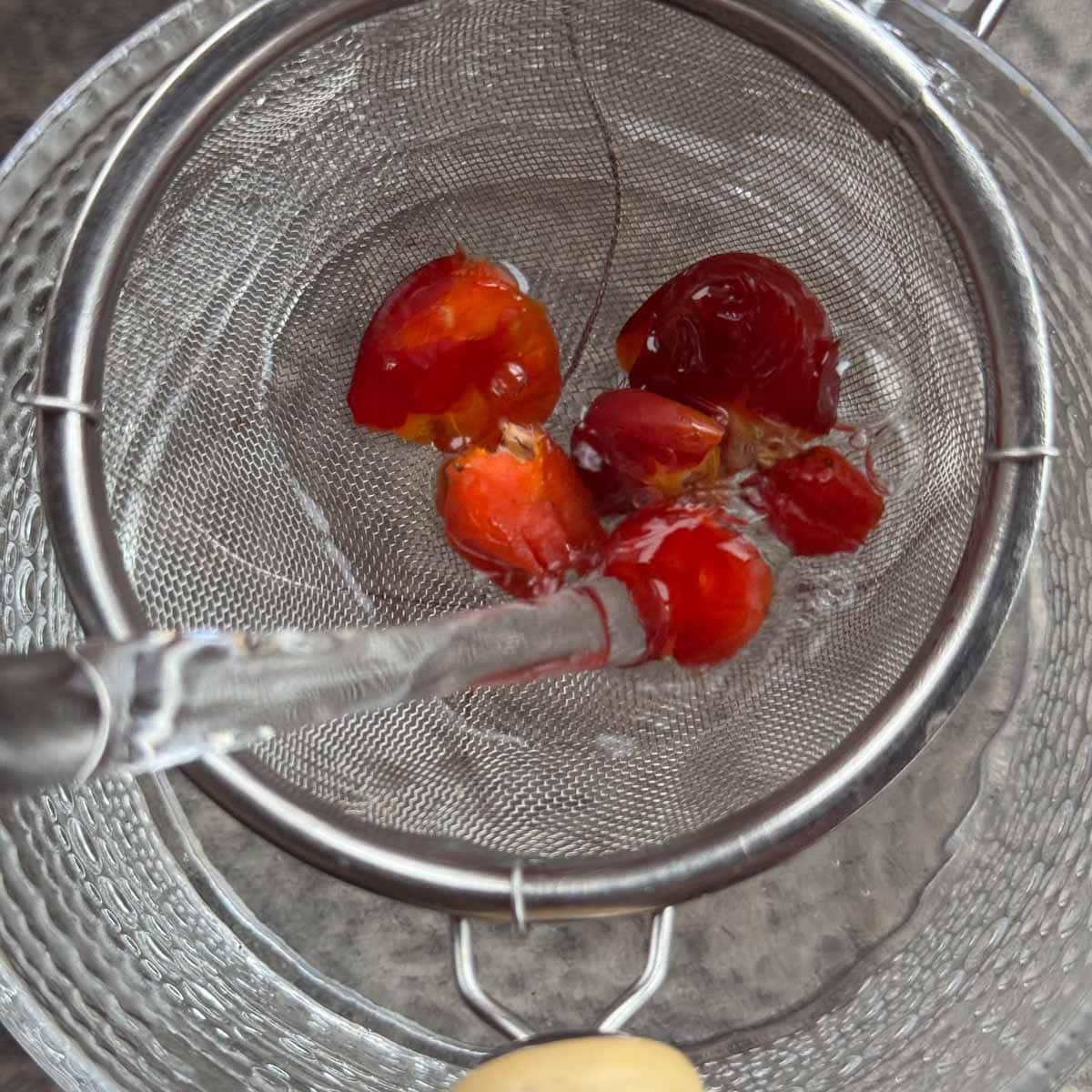
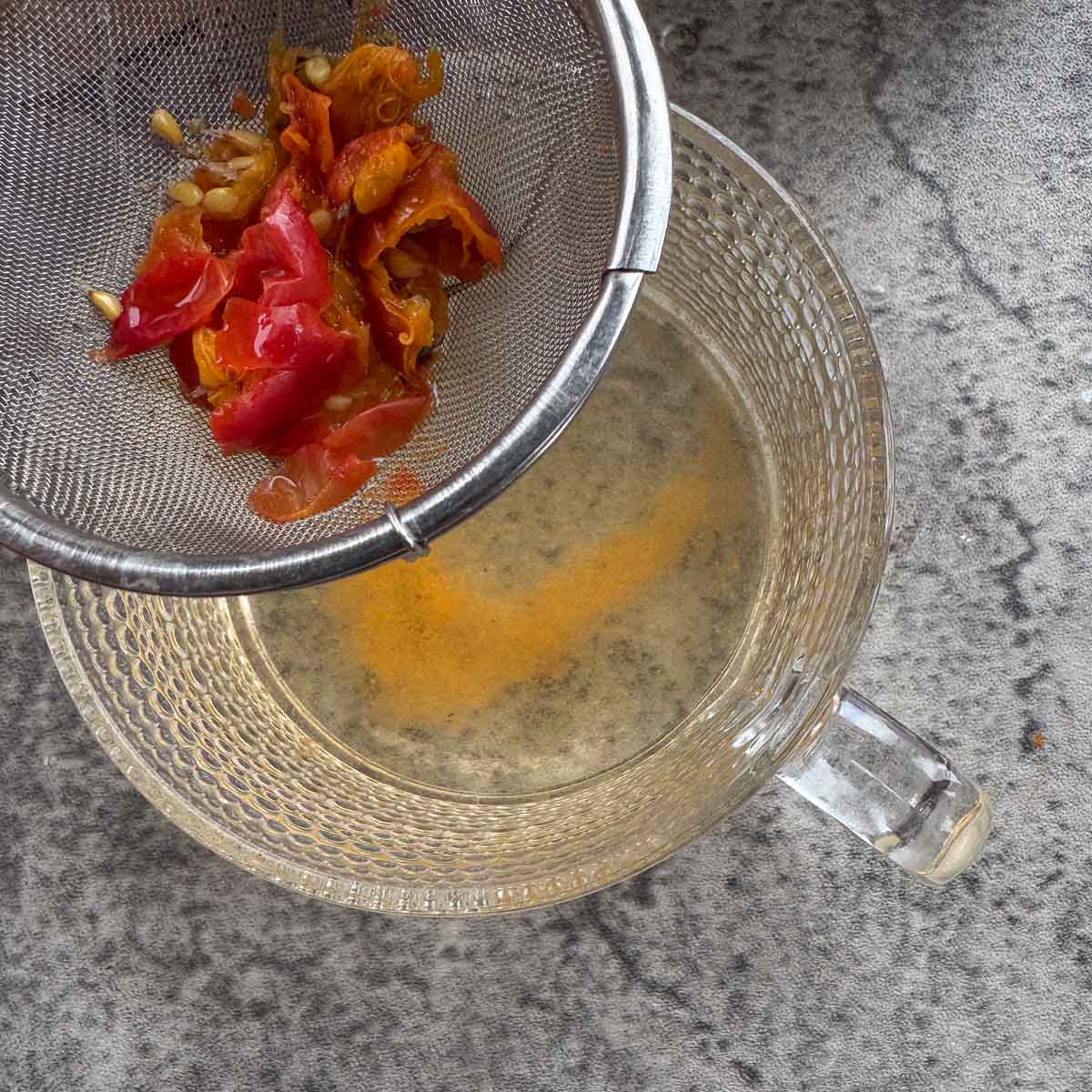
Pro Tip: If using a strainer, you may end up with some sediment in the cup. If you prefer your tea clearer, filter through a coffee filter.
How to Make Dried Rosehips Tea
Step 1: Add 1 tablespoon of dried rosehips to a tea bag, then pour 1 cup of boiling water over them. Steep 8 minutes, then sweeten, and enjoy!
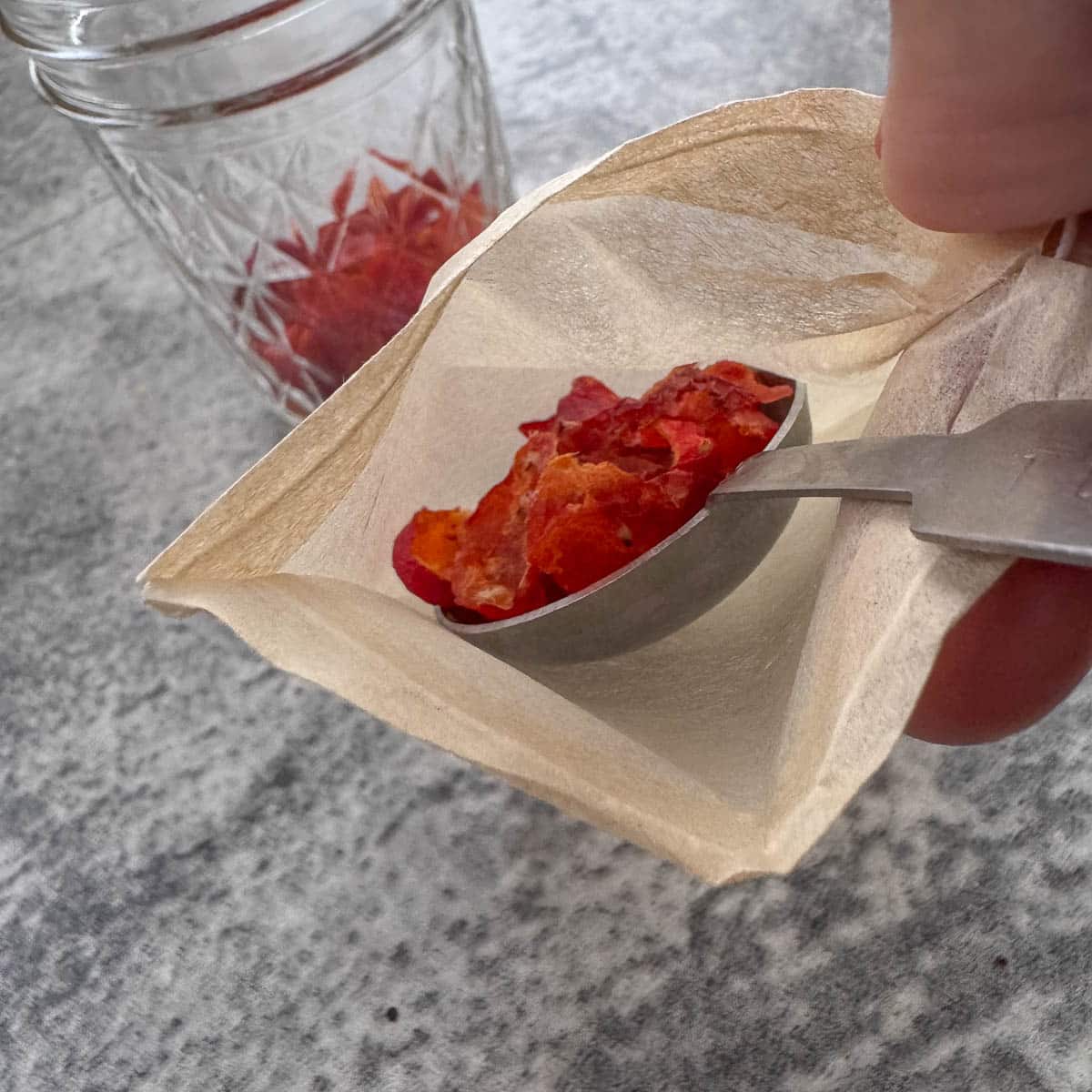
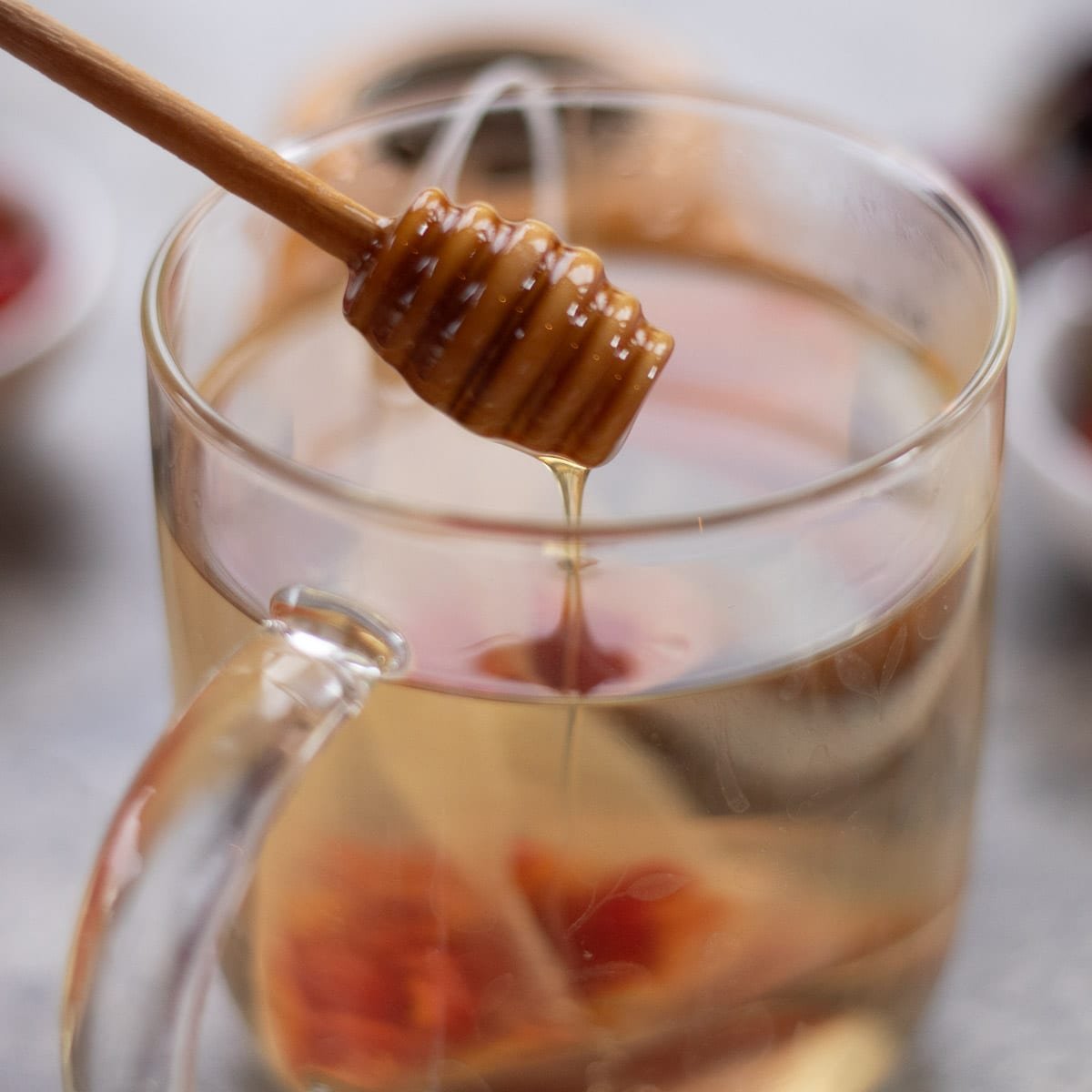
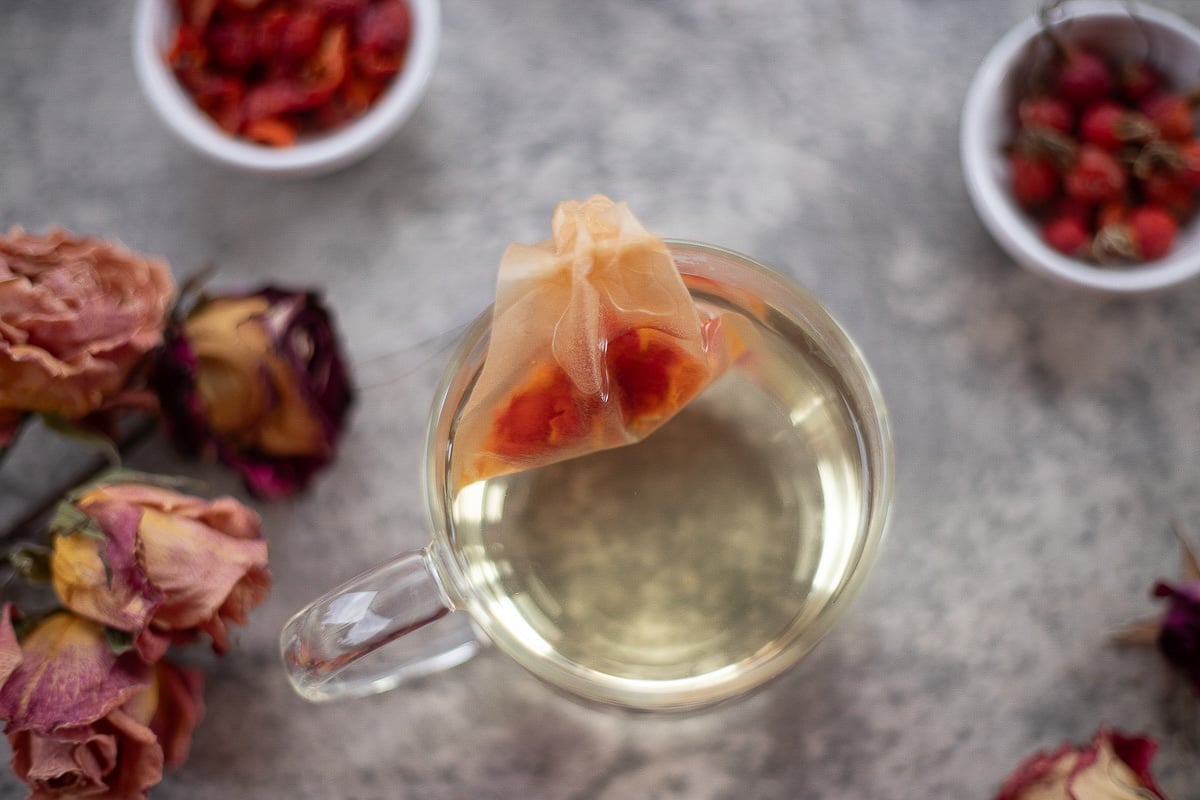
🌹 Rosehip-to-Water Ratio
For the perfect cup of Rosehip Tea:
- Fresh rosehips: 4-6 per cup of boiling water (about 1 heaping tablespoon chopped)
- Dried rosehips: 1 tablespoon per cup of boiling water
- Large batch: ½ cup rosehips per quart of water
💡 Lightly crush the rosehips before steeping to release more flavor and nutrients without overcooking.
🩺 Rosehip Tea Benefits
According to this PubMed study, to retain rosehip tea benefits (including antioxidant properties), the tea needs to be brewed at 183-186°F (84-86 °C) for 6 to 8 minutes. Using hotter water or steeping the tea longer will lessen the good properties found in rosehip tea. According to this WebMD article, rosehips may also have the following benefits:
- Support immune health
- Soothe sore throats
- Aid digestion
- Reduce blood sugar
- Reduce inflammation
- Lower cholesterol
♨️ How to Dry Rosehips
Slice rosehips down the center, then scoop out the tiny hairs and seeds inside with a small spoon or the end of a small spoon.
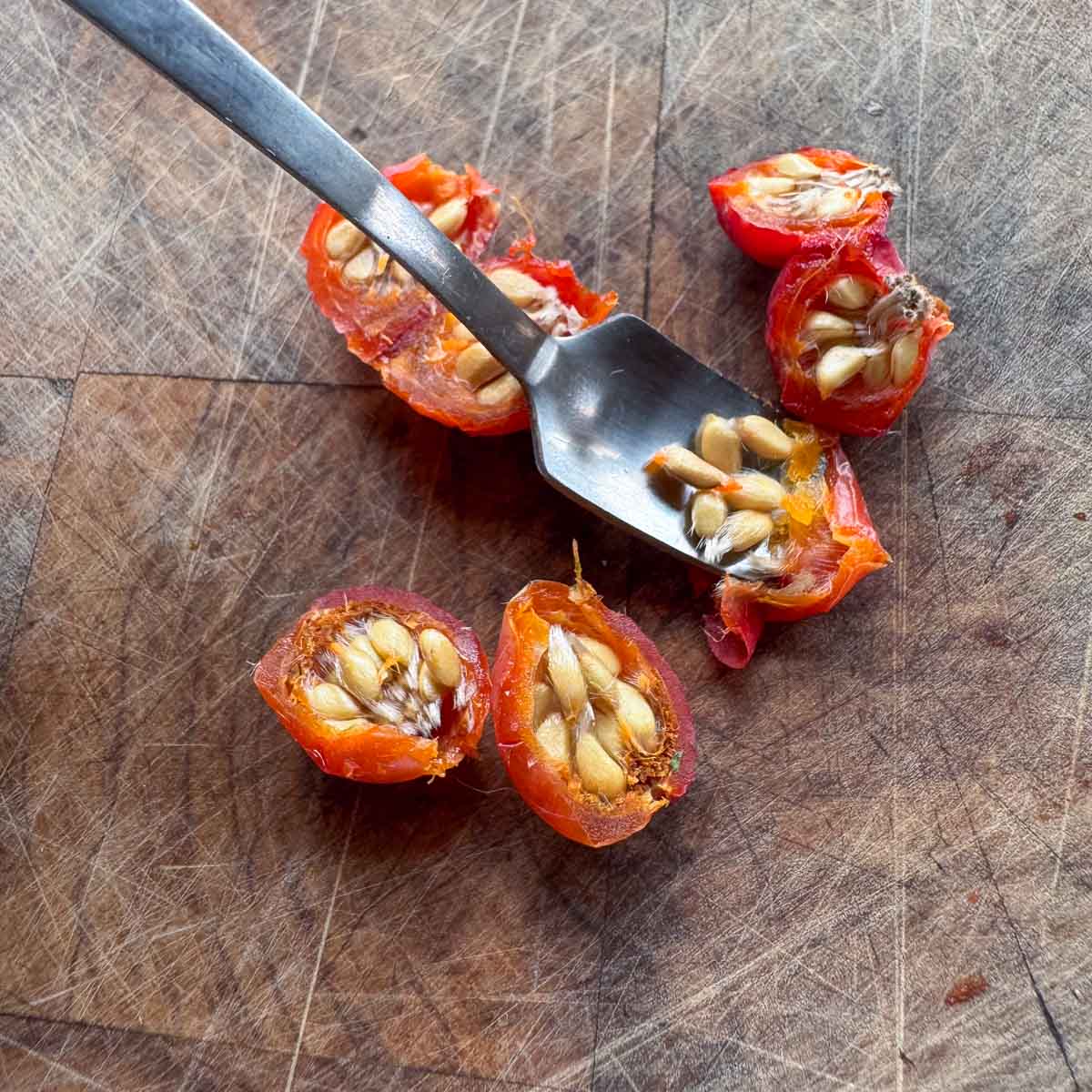
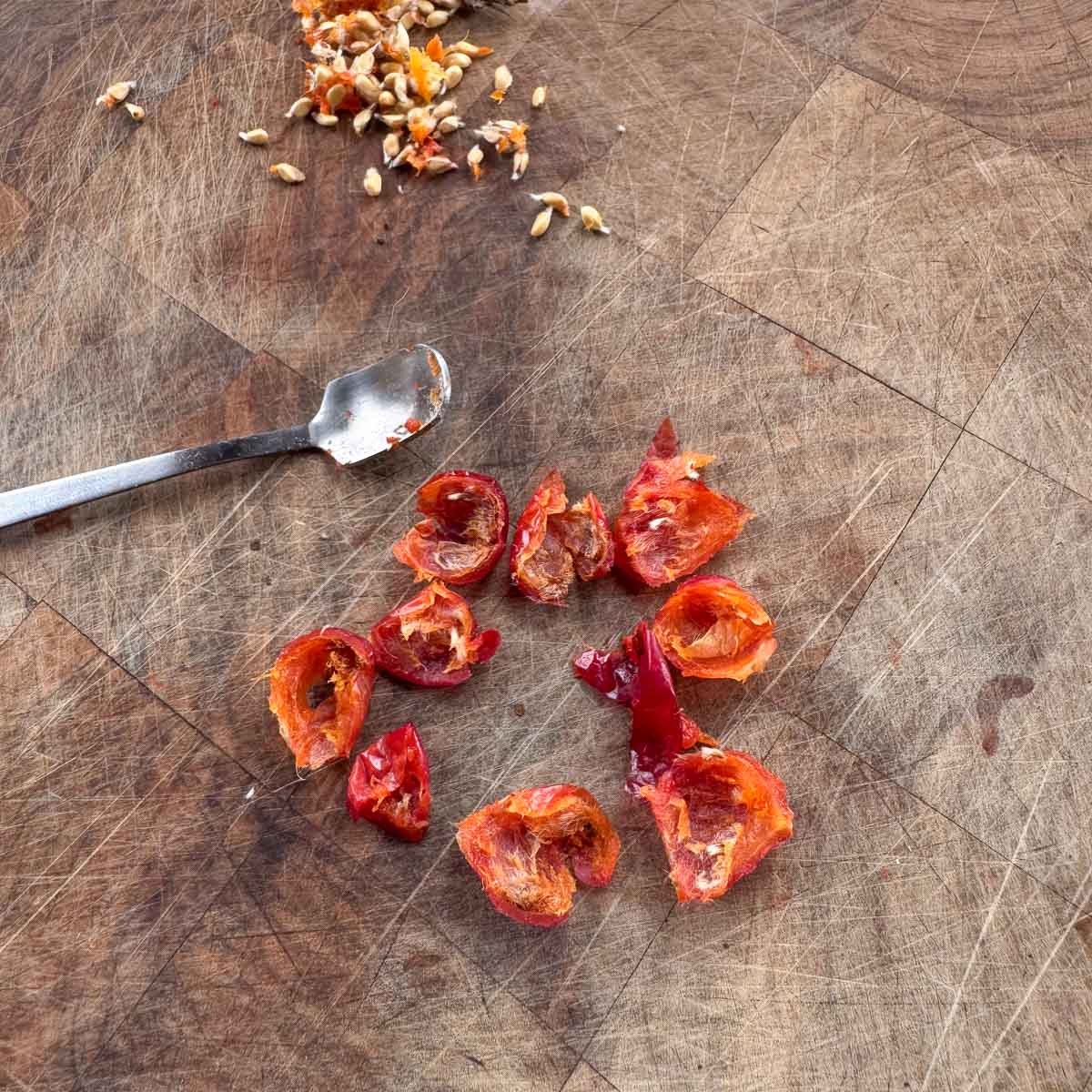
Would you like to save this recipe?
Place the two rosehip halves on dehydrator trays and dehydrate at 135°F for 2 ½ to 3 hours or until no longer tacky.
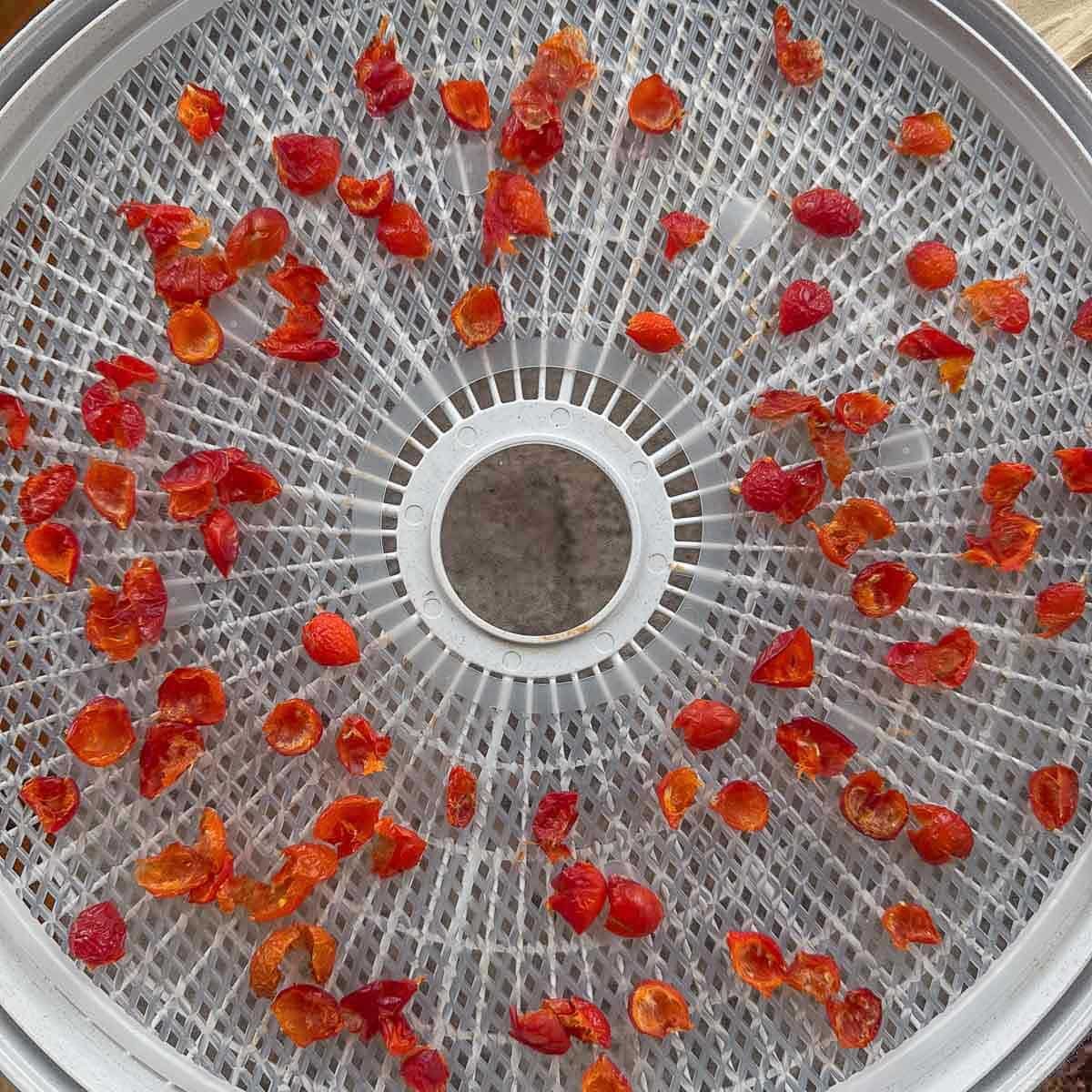
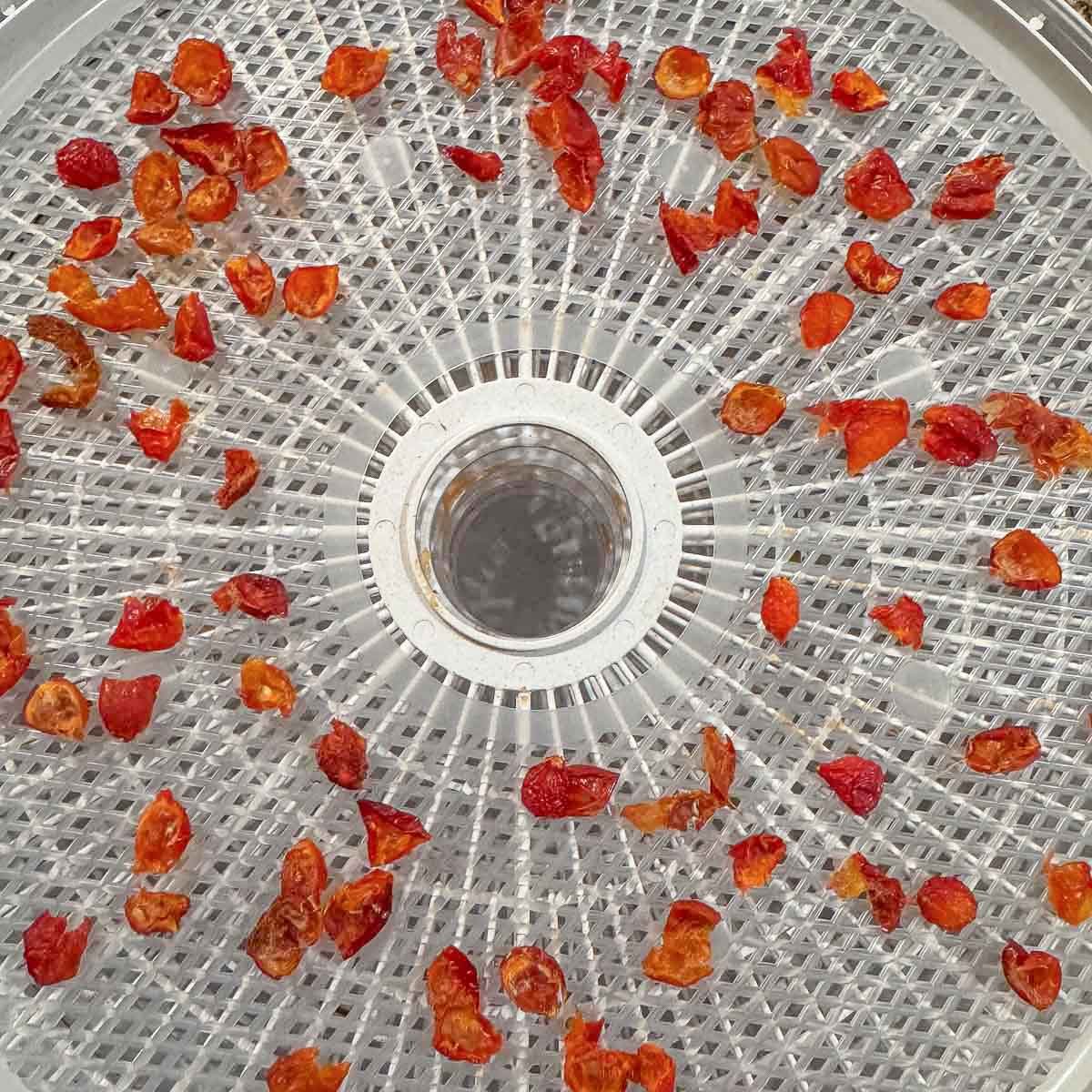
🧋Serving Ideas & Variations
You can serve rosehip tea both hot and iced. You can also make tea blends with dried rosehips. Mix it with hibiscus, dried orange slices, lemon peel, fresh mint, or echinacea.
Try sweetening it with various syrups to get different flavor profiles. Try fig syrup, orange syrup, prickly pear syrup, or a personal favorite, elderberry syrup!
🌹 Types of Rosehips You Can Use
Not all rosehips are created equal, but the good news is, most are perfectly fine for tea! If you have wild roses growing nearby or a few ornamental rose bushes in your yard, chances are you already have a free source right under your nose.
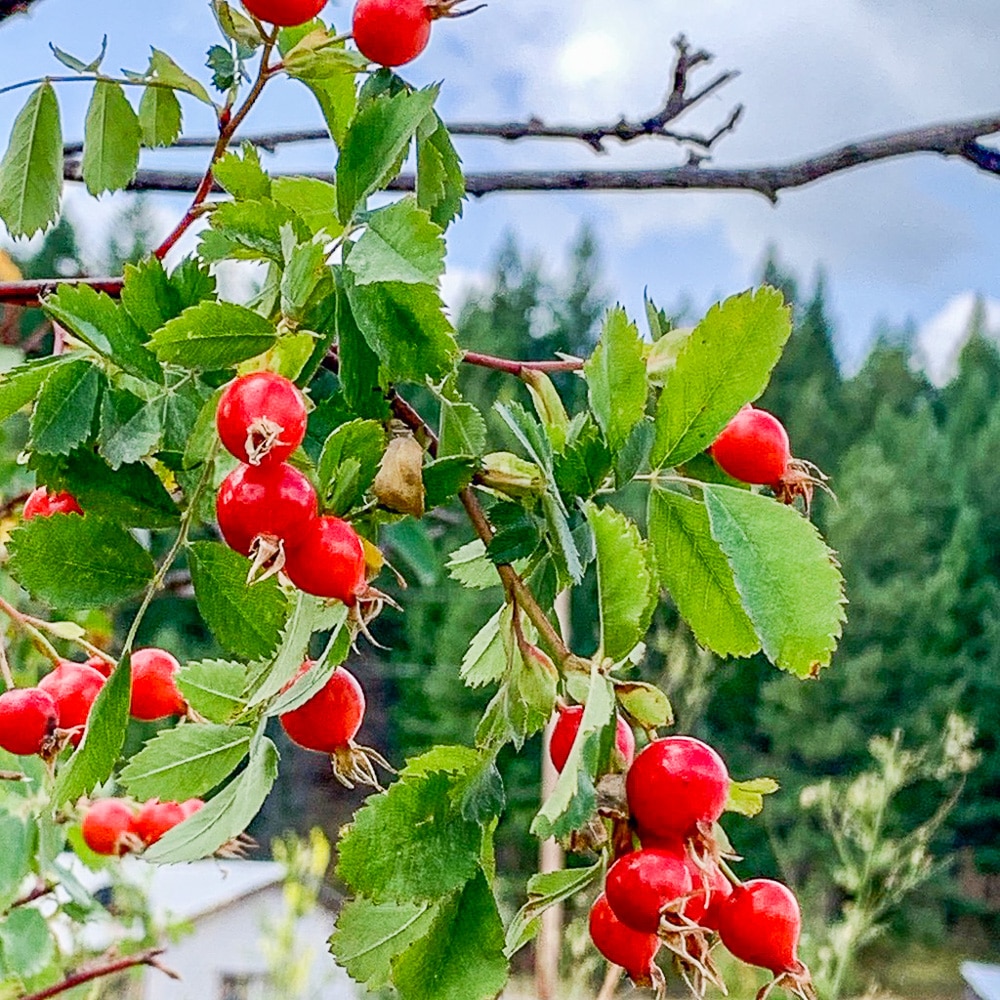
Wild Roses (Rosa woodsii or Rosa acicularis)
These are the native wild roses commonly found across North America, including right here in Montana. Their hips are smaller and seedier, but they pack a tart, concentrated flavor that's fantastic for tea.
Dog Rose (Rosa canina)
This species is native to Europe and is often used commercially in dried rosehip tea blends. Dog rose hips are oval-shaped, bright red, and rich in vitamin C. If you're buying dried rosehips online, chances are they're from this plant.
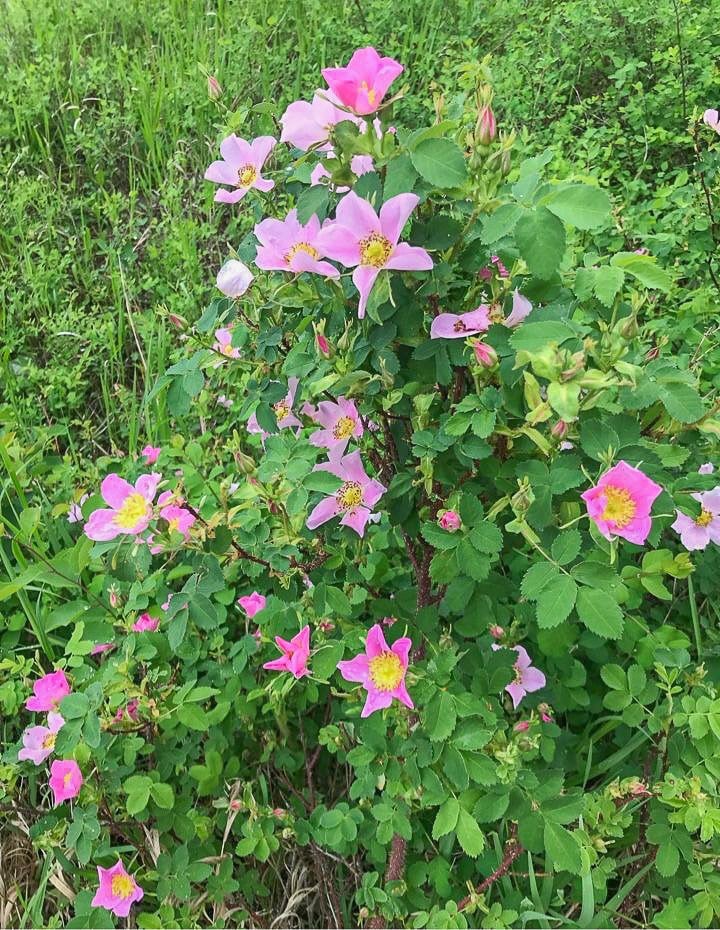
Rugosa Rose (Rosa rugosa)
You'll recognize these by their wrinkly leaves and big, round "fat" hips that almost look like cherry tomatoes. They're easy to harvest and have a slightly sweeter, milder taste, perfect if you prefer a smoother tea.
Garden Roses
Yes, you can use rosehips from cultivated garden roses. Just make sure they haven't been sprayed with pesticides or fungicides. Always wash thoroughly before using.
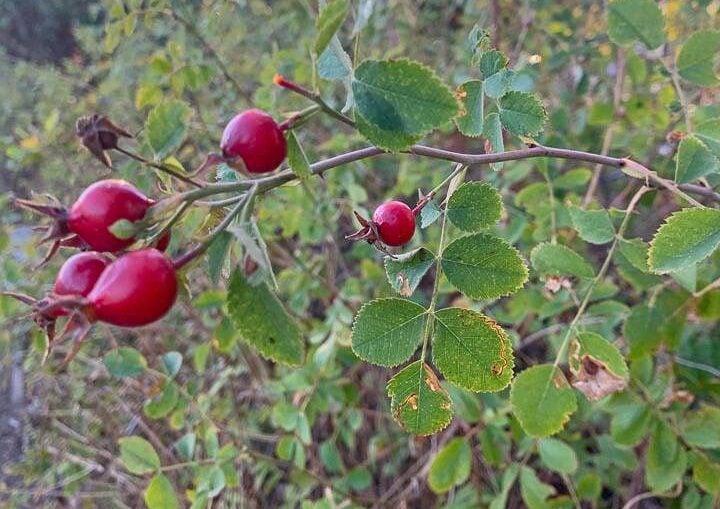
🤷🏻♀️ Recipe FAQs
Rosehips have a slightly tart, sweet, and floral flavor. Kind of like a cross between hibiscus and cranberries. If you like a slightly tangy, slightly sweet tea, you'll love rosehip tea!
Absolutely! Rosehips are loaded with vitamin C, antioxidants, and anti-inflammatory compounds. They can support immune health, joint relief, and glowing skin!
Rosehips can be purchased online, at health food stores, and at herbal apothecaries. Just make sure they're food-grade and preferably organic.
You sure can, it's caffeine-free, and gentle enough for daily sipping. If you have kidney issues or are on medications, check with your doctor just to be safe.
Keep them in an air-tight jar, in a cool, dark location for up to a year. As long as there is no moisture remaining in them, they should not spoil.
👩🏼🍳 Pro Tips
- If harvesting rosehips instead of purchasing them, make sure to do so after a few good frosts. This ensures they are sweeter.
- Boiling for too long will destroy the vitamin C. Aim for about 8 minutes.
- Use a fine mesh strainer or a soup bag so that no irritating hairs/fibers sneak into your tea. If some sediment sneaks through, strain again through a tea bag or coffee filter.
- For a spicier version, toss in a piece of cinnamon stick, fresh ginger, or a few cloves.
- You can freeze rosehips whole to enjoy rosehip tea all winter long.
- If you intend to freeze some and dry some, I recommend freezing the smaller ones whole (because it's harder to remove their seeds) and deseeding and drying the larger ones.
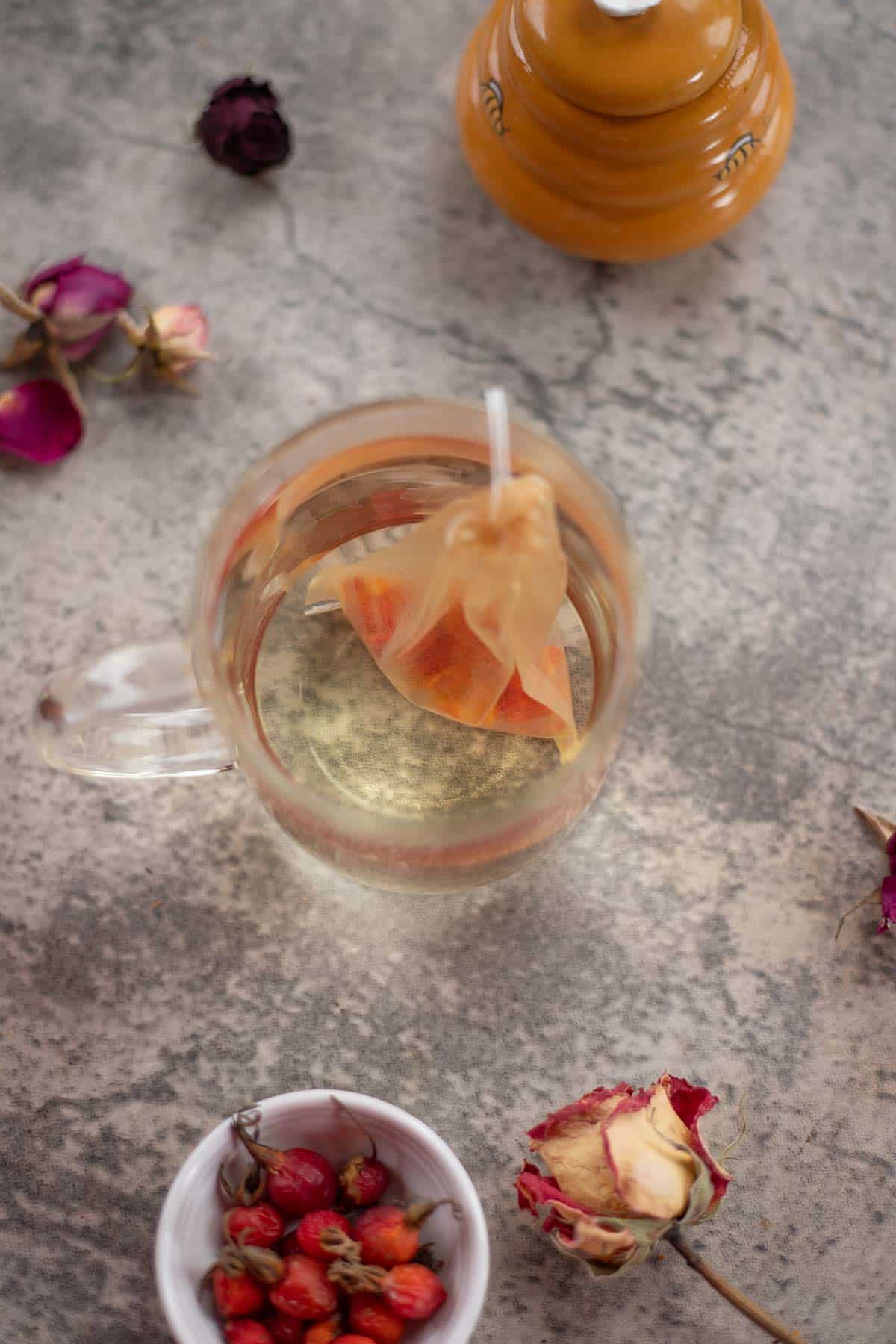
Whether you sip it for health benefits or for its light, floral flavor, rosehip tea is a cozy drink you can feel good about enjoying this time of year.
🫖 More Tea Recipes
If you enjoy rosehip tea, check out these other unique teas as well!
Did you make this recipe?
📖 Recipe
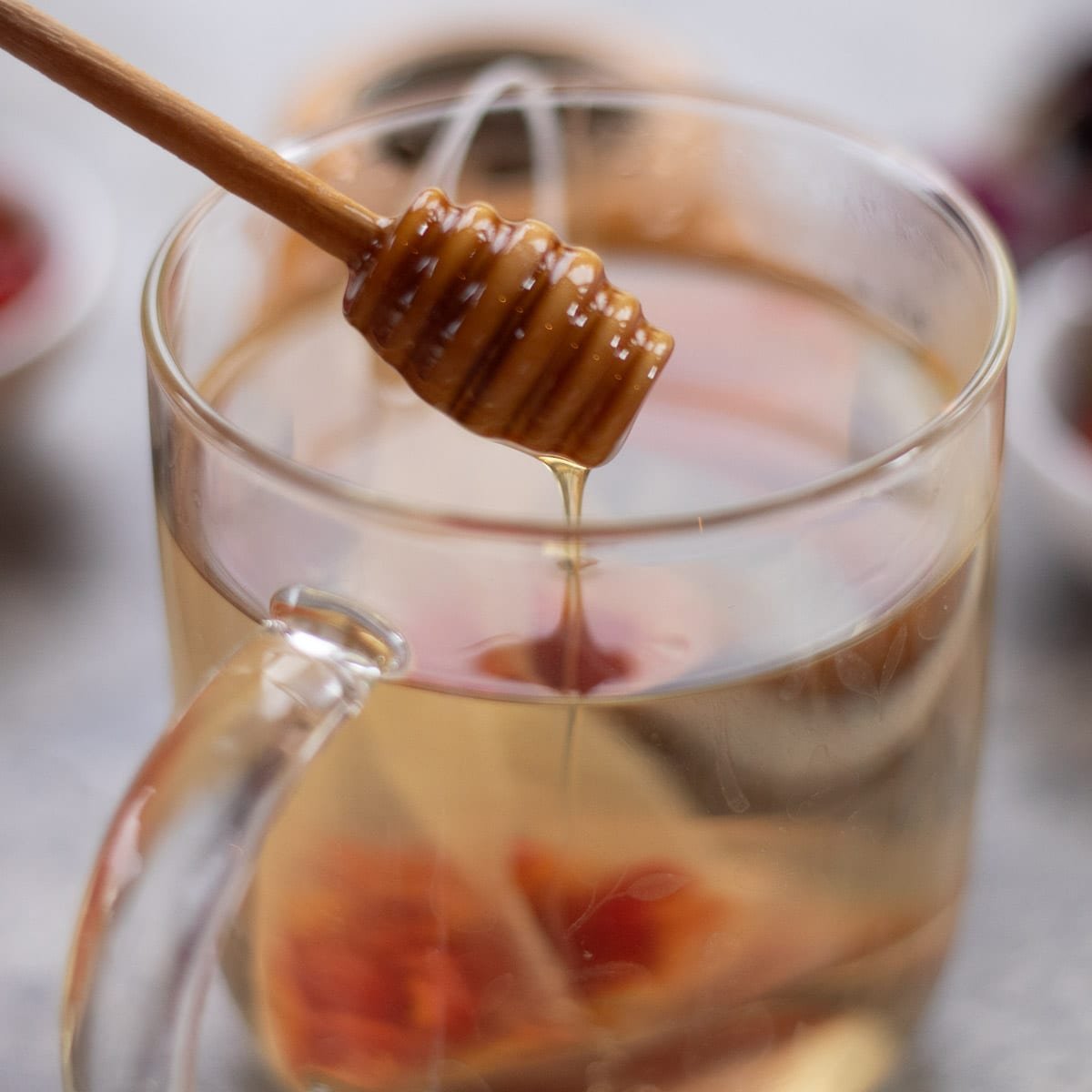
How to Make Rosehip Tea
Ingredients
Equipment
Method
- Rinse and remove rosehip stems and blossom ends, then lightly crush to release their flavor.
- Add approximately 6 crushed rosehips to a tea bag, tea strainer, or tea pot and steep in water heated to 185°F for approximately 8 minutes. Strain tea, sweeten with your favorite sweetener, and enjoy!
- Add 1 tablespoon of dried rosehips to a tea bag, then pour 1 cup of boiling water over them. Steep 8 minutes, then sweeten, and enjoy!
Nutrition
Notes
- If harvesting rosehips instead of purchasing them, make sure to do so after a few good frosts. This ensures they are sweeter.
- Boiling for too long will destroy the vitamin C. Aim for about 8 minutes.
- Use a fine mesh strainer or a soup bag so that no irritating hairs/fibers sneak into your tea. If some sediment sneaks through, strain again through a tea bag or coffee filter.
- For a spicier version, toss in a piece of cinnamon stick, fresh ginger, or a few cloves.
- You can freeze rosehips whole to enjoy rosehip tea all winter long.
- If you intend to freeze some and dry some, I recommend freezing the smaller ones whole (because it's harder to remove their seeds) and deseeding and drying the larger ones.

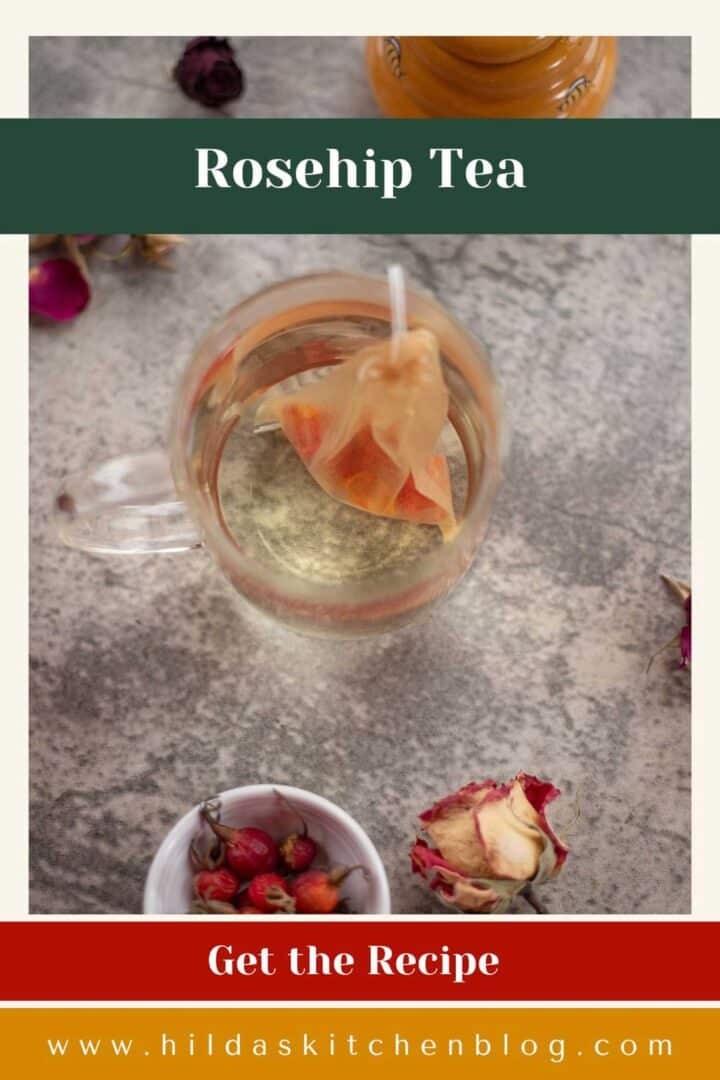



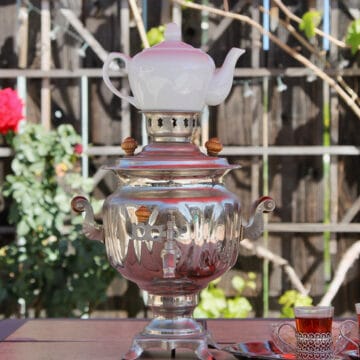
Hilda Sterner says
I hope you give this tea a try, it's really tasty!